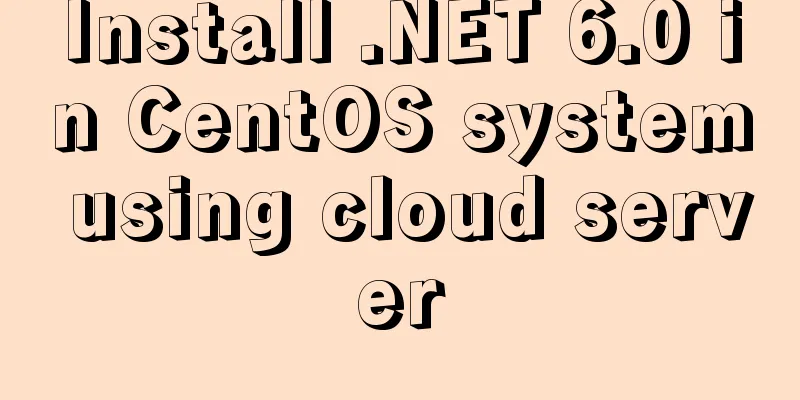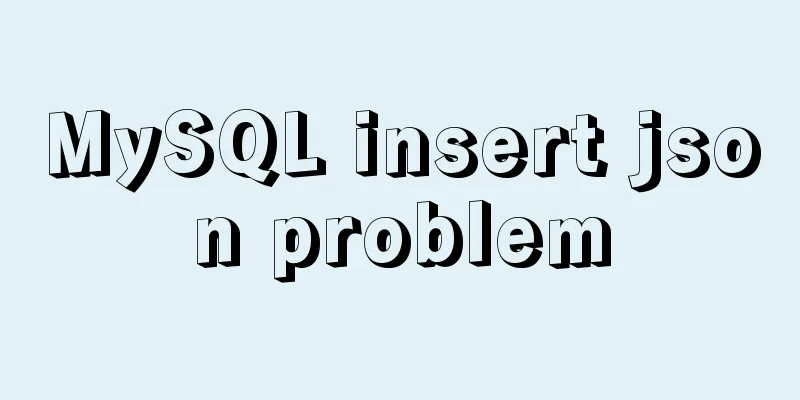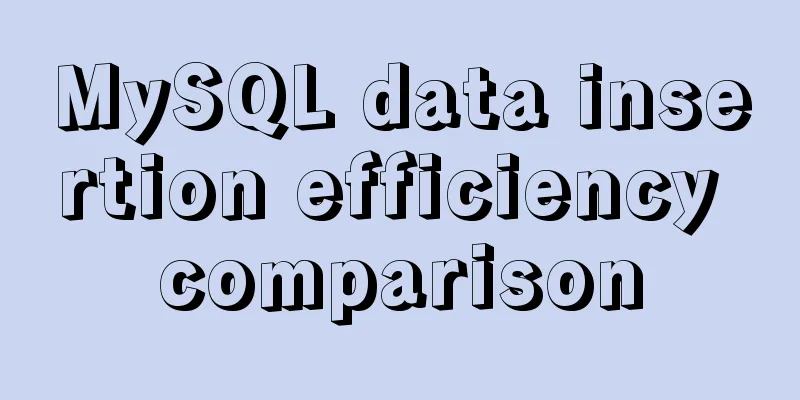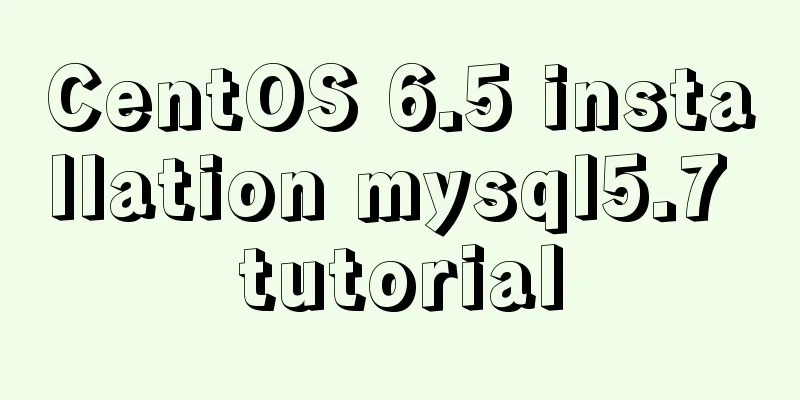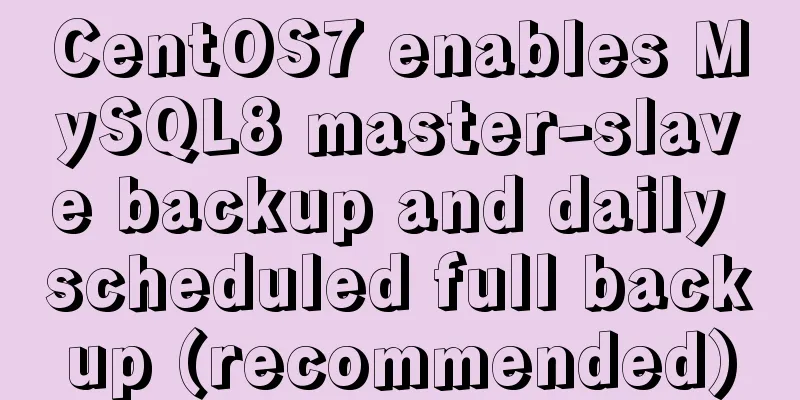Installation tutorial of mysql 5.7 under CentOS 7
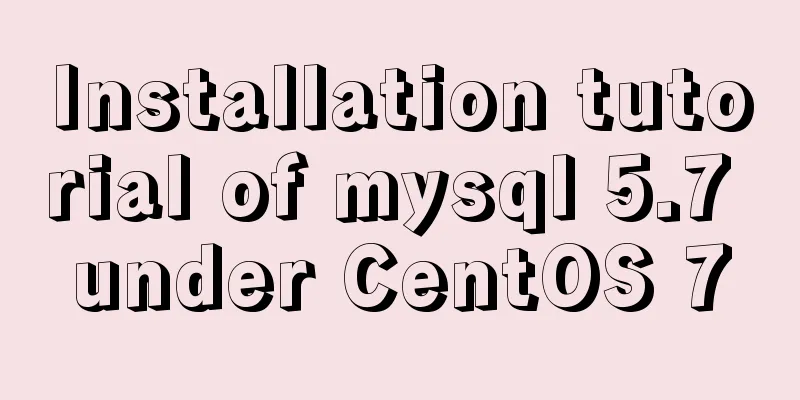
|
1. Download and install the official MySQL Yum Repository wget -i -c http://dev.mysql.com/get/mysql57-community-release-el7-10.noarch.rpm The rpm file will be generated in the current directory
2. Install using yum yum -y install mysql57-community-release-el7-10.noarch.rpm yum -y install mysql-community-server After waiting for a while, MySQL will be installed, followed by some settings for MySQL. 3. Change the root password After successful installation, a root user will be created by default with an initial password. You need to change the initial password and start mysql systemctl start mysqld.service Find the initial password in the MySQL log. The command is as follows grep "password" /var/log/mysqld.log
Enter the database using the following command mysql -uroot -p
Execute the change password command in the mysql client connection environment ALTER USER 'root'@'localhost' IDENTIFIED BY 'new@password'; At this point the password has been changed successfully, restart the mysql service systemctl restart mysqld.service 4. Change the character set to UTF-8 Enter MySQL through the command mysql -uroot -p. Note that it is a new password. In the MySQL environment, use the following command to view the character set. show variables like '%character%';
We can see that the character sets above are not all utf-8. Now we open the mysql configuration file in the bash terminal. vi /etc/my.cnf Add the following configuration items according to actual situation #add by tangxiaobai character-set-server=utf8 [client] default-character-set=utf8 [mysql] default-character-set=utf8
Restart the server and check whether the character set has been modified successfully.
We see that the character set has been modified successfully 5. Set up MySQL to support remote connection So far, our Mysql cannot be accessed remotely. Here we use the table method, log in to the mysql command client, and execute the following command use mysql; update user set host = '%' where user = 'root'; Restart the Mysql service and test it with the client connection tool
We see that the mysql connection test is successful. But there is still a problem at this time, that is, because the Yum Repository is installed, each subsequent yum operation will automatically update, so you need to uninstall it: yum -y remove mysql57-community-release-el7-10.noarch The above is the full content of this article. I hope it will be helpful for everyone’s study. I also hope that everyone will support 123WORDPRESS.COM. You may also be interested in:
|
<<: React tips teach you how to get rid of hooks dependency troubles
>>: Complete steps for Nginx to configure anti-hotlinking
Recommend
Mysql5.7.14 installation and configuration method operation graphic tutorial (password problem solution)
This article mainly involves solutions to problem...
The difference between MySQL database host 127.0.0.1 and localhost
Many of my friends may encounter a problem and do...
Implementation of Nginx Intranet Standalone Reverse Proxy
Table of contents 1 Nginx Installation 2 Configur...
Detailed explanation of the idea of distributed lock in MySQL with the help of DB
Preface Whether it is a stand-alone lock or a dis...
How to embed other web pages in a web page using iframe
How to use iframe: Copy code The code is as follo...
Various ways to achieve the hollowing effect of CSS3 mask layer
This article introduces 4 methods to achieve mask...
Detailed explanation of Frp forced redirection to https configuration under Nginx
Because the router at home forced to reduce the b...
Vue imitates ElementUI's form example code
Implementation requirements The form imitating El...
Let's talk about the two functions of try catch in Javascript
The program is executed sequentially from top to ...
Detailed graphic explanation of how to clear the keep-alive cache
Table of contents Opening scene Direct rendering ...
How to create a file system in a Linux partition or logical volume
Preface Learn to create a file system on your sys...
Perform data statistics on different values of the same field in SQL
Application scenario: It is necessary to count th...
js realizes packaging multiple pictures into zip
Table of contents 1. Import files 2. HTML page 3....
Solution to the error when installing Docker on CentOS version
1. Version Information # cat /etc/system-release ...
Summary of some HTML code writing style suggestions
Omit the protocol of the resource file It is reco...








